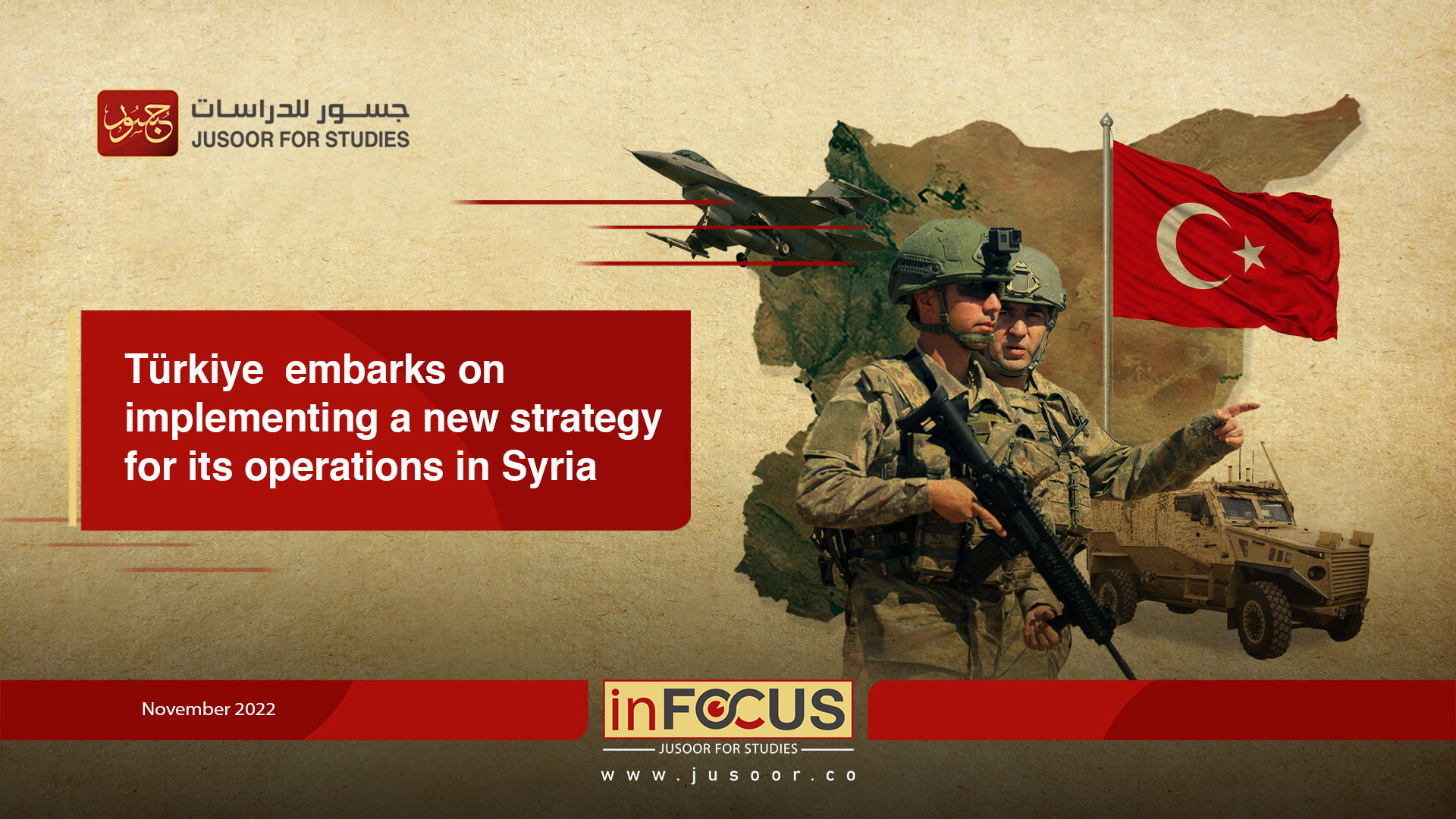Türkiye embarks on implementing a new strategy for its operations in Syria
On November 20, 2022, Türkiye launched the "Claw-Sword" air operation in northern Syria against the positions of the PKK and the Syrian Democratic Forces (SDF).
It seems that Türkiye has embarked on implementing a new military strategy in Syria, focusing on the use of the air force as a tool to achieve its military goals almost in full. Ankara might have realized that it is not enough to carry out the usual tasks in providing air coverage to prepare the ground for the land forces.
Accordingly, Turkish warplanes and drones carry out tasks of draining and weakening the PKK and the SDF, by launching air strikes on command posts, weapons depots, supply lines, bunkers, and other military, logistical, and economic facilities.
Operational coordination with the United States and Russia has achieved a shift in expanding the size and scope of the operations. As such, the "Claw-Sword" operation has been the broadest and most intense since Türkiye's reliance on air operations in Syria, that is, compared to the "Winter Eagle" operation in February 2022 and the strikes that preceded it, which started in August 2021.
It is noted that the high military coordination between Washington and Ankara has enabled the Turkish warplanes to reach Deir ez-Zor Governorate for the first time since Türkiye launched its military operations in Syria. This flexible position of the United States can be explained in light of a desire to maintain Türkiye's status of positive neutrality in the relationship with Russia.
On the other hand, coordination between Türkiye and Russia at the minimum just to ensure the safety of Turkish pilots; because Moscow controls air defense systems covering the Syrian airspace. It is noted that this coordination guaranteed, in return, only the safety of the Russian troops in some locations, without taking into account the safety of the Syrian regime forces, whose positions were subject to bombardment in Ayn al-Arab.
Russia was clearly dissatisfied with the operation, as it resorted to escalation in Idlib to put pressure for recalibrating the scope and scale of Turkish airstrikes.
The timing of the air operation, which began before the "Astana 19" round on Syria, indicates Türkiye's desire to impose new rules of engagement regarding the mechanism of dealing with threats coming from the SDF-controlled areas.
It seemed that there were secondary goals in this operation, such as testing the seriousness of Sweden and Finland in backing from supporting the PKK and its Syrian branch in return for Ankara not to object to their joining NATO. In this regard, the Swedish Foreign Ministry expressed its support for Türkiye's right to defend itself.
It can be said that Türkiye chose to carry out the operation at a time when international actors are preoccupied with higher priorities, as Russia and the West are focusing on the conflict in Ukraine, and Iran facing the challenge of massive popular protests.
It is known that Türkiye had vowed to launch a military operation in northern Syria in May 2022. However, it seems that Ankara was unable to achieve sufficient military and security coordination with Russia and the United States in a way that would allow its ground and air forces to carry out a new attack.
The new Turkish strategy, however, might have constituted an alternative to the ground operation, as air strikes via warplanes and drones may not necessarily develop into the participation of ground forces; especially when the United States, despite the high level of coordination, expressed its fear of the impact of launching such an operation on the war against ISIS. This, according to Washington, may constitute an obstacle to expanding the level of coordination, which might allow a ground offensive to be launched
Eventually, Türkiye's threat of further escalation may be for the purpose of obtaining advantages in military coordination from the United States and Russia. Such an action is a reminder of the Israeli strikes inside Syria. In this, Türkiye can achieve a continuous ability to strike the targets it wants in return for taking measures to prevent a collision between air and ground forces.

